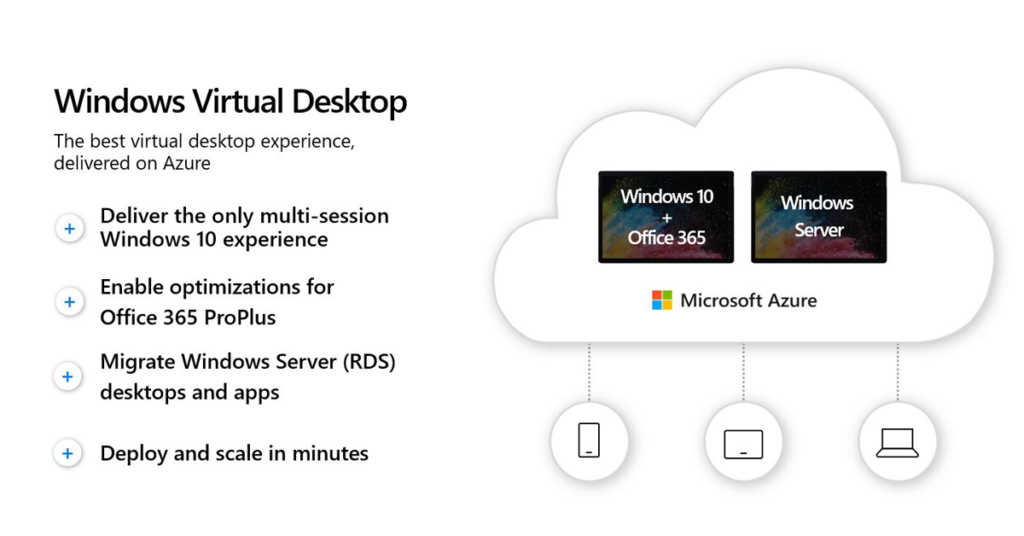Microsoft Spring Releases: Work Anywhere, Secure Everywhere
For those working in information technology and security, it's always exciting to see what new products and improvements are being released. Now more than ever, under novel circumstances with so many employees working from home, many of us are anxious to see what these latest releases can offer to help us navigate remote work smoothly and securely. The Microsoft spring releases are geared toward helping companies and employees make this transition, allowing them to work securely from any device, in any place. Here's some of the big news in the Microsoft spring releases announced on April 30.
Azure AD Single Sign-on

The secure single sign-on (SSO) within Azure Active Directory (AD) is now extended so that users can employ it with unlimited cloud applications---and this is across every pricing tier, include Azure AD Free. Any subscriber of a commercial Microsoft online service can connect all their cloud applications to Azure AD with no extra fee. And this SSO is secured by default with multi-factor authentication, an essential element of secure logins. This is a big extension, as Microsoft previously limited the SSO capability to ten apps for the lower-tiered packages. And now Microsoft is adding new features to simplify access management for IT administrators as well.
Microsoft Productivity Score Preview

As remote workers across all kinds of fields will now attest, productivity under new home environments is a significant concern. Microsoft is enhancing its preview of Productivity Score, which helps bring visibility to how an organization is working, providing insights and recommendations to fix any problems and improve productivity. With Productivity Score, you can set your own business goals and benchmarks, and then measure how well they are being met in employee experiences. You can adjust these goals as needed, making this a particularly helpful tool during remote transitioning (and later, transitioning back to the workplace if applicable). Microsoft originally announced the Productivity Score preview at the Ignite conference last fall. They've taken feedback following that announcement, as well as consideration of work-from-home challenges, to improve insights in various categories:
- Network Connectivity shows which worksite locations have network challenges that could inhibit access to critical platforms like Exchange Online or SharePoint Online.
- Communications is a new category meant to increase awareness of communication options for users.
- Content Collaboration allows admins to understand how users read, write, collaborate, and share their content in SharePoint and OneDrive.
- Endpoint Analytics helps measure and improve time to productivity, or the lag time a process takes before a user is able to do their work. Endpoint Analytics can find hardware issues or policies set that could be slowing down devices, and it can even proactively make changes without having to disrupt users or involve the IT help desk.
Updates to Windows Virtual Desktop

New improvements in Windows Virtual Desktop (WVD) also help make it easier to work in virtual environments. Here are some of the updates:
- Deep integration with the Azure Portal allows admins to manage WVD faster and more directly, using the portal as a central way to complete tasks like setting up users, creating host pools, and more.
- Added compliance and security options and support help companies maintain compliance in ways that work best for them.
- Further capabilities to add and link groups to desktops and apps make remote collaboration easier.
- A native ARM deployment rather than use of the WVD tenant API makes for more centralized and secure connections.
- Support for Microsoft Teams is also in the works and should roll out in public preview within the next month. This will allow WVD environments using Microsoft Teams to use something called “A/V redirection,” which creates a direct path between users sharing video and enhances the quality of their video/audio experience.
Find Out More About Microsoft Spring Releases and WVD
For more information on Windows Virtual Desktop, check out our WVD pricing and deployment guides. Or contact us to talk more about the Microsoft spring releases and how they can help your company stay productive during this time of massive remote work. You can also stay up to speed with Microsoft updates by viewing what's new in Windows 10 version 2004.
Stay connected. Join the Infused Innovations email list!
Share this
You May Also Like
These Related Posts

New Improvements to Microsoft Secure Score in December 2021

Microsoft Expands its Defender for Endpoint to Windows Server 2012 R2 and 2016

No Comments Yet
Let us know what you think